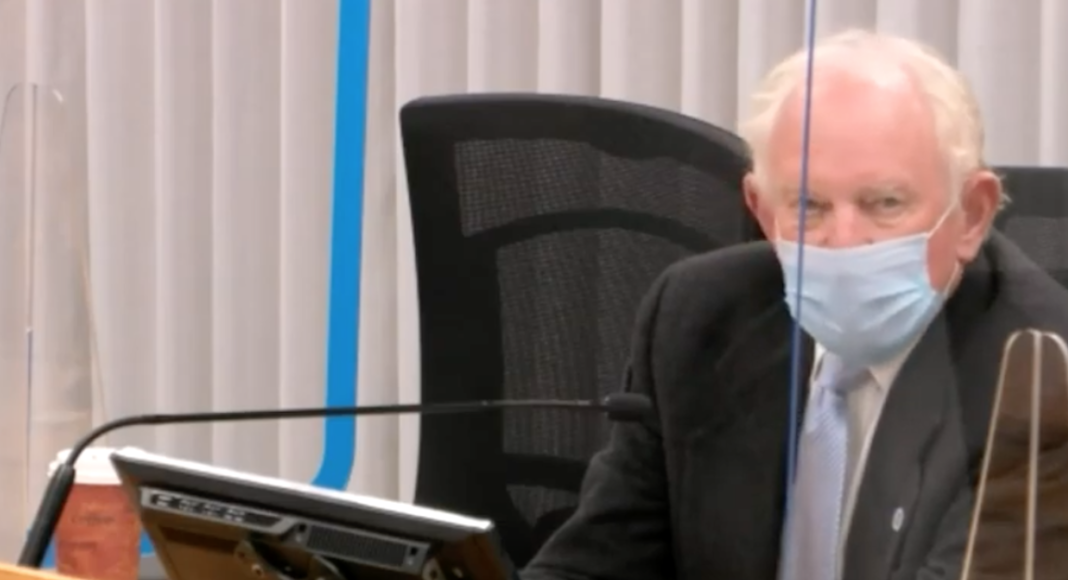The Santa Cruz County Board of Supervisors on Nov. 16 approved a controversial plan to redistribute some 3,400 residents—the majority in the northern reaches of the county—as part of the county’s decennial redistricting process.
Under the plan, 491 people in Watsonville’s Apple Hill District will shift from the 2nd to the 4th District, and 613 people will move from the 3rd to the 1st District in the area of Brommer Street and East Harbor.
The city of Scotts Valley, which was split along Highway 17 during the previous redistricting a decade ago, will be reunified, shifting 2,300 people from the 1st to the 5th District.
Under state law, jurisdictions must redraw supervisorial boundaries every 10 years using data from the recent census to make the populations equal in each district. When doing so, jurisdictions must, when possible, keep “communities of interest” together, and typically use boundaries such as rivers, streets and highways.
A community of interest is a group of residents with a common set of concerns that may be affected by legislation. That includes ethnic, racial and economic groups, among others.
The county this year was tasked with redistributing its 271,350 residents.
While the shifts in Watsonville and Santa Cruz garnered little discussion during public comment, the proposal to reunify Scotts Valley did. That proposal came forth during the previous board of supervisors meeting on Nov. 9 in a letter from Scotts Valley Mayor Derek Timm that was forwarded by 2nd District Supervisor Zach Friend.
Timm says the split was confusing for the small city of roughly 11,000 people, which had its own police and fire department boundaries, as well as water and school districts, but shared two supervisors.
“We were split and we felt disenfranchised,” he told the supervisors on Nov. 16. “What happened 10 years ago can be corrected.”
The new map passed 3-2, with Supervisors Ryan Coonerty of the 3rd district and Bruce McPherson of the 5th district dissenting.
That decision largely rebuked several months of public meetings, research and deliberation conducted by the Santa Cruz County Redistricting Commission that began in earnest in September.
McPherson, who made a failed motion to support a plan that included the changes in Santa Cruz and Watsonville, but not in Scotts Valley, said that all the unincorporated parts of the cities in the county are currently represented by two supervisors.
Coonerty said that Timm’s proposal was done properly and reflected his desire to support the city, but said he wanted to follow the commission’s recommendation. McPherson also said he wanted to support the recommendation of the commission.
But Timm was slammed during the public comment portion of the meeting for presenting the issue at the “last minute” of the redistricting process.
“What happened last week was blatant politicking,” said Coco Walter, a Ben Lomond business owner. “Mayor Timm jumped straight to the front of the line … that just reeks of entitlement.”
Ben Lomond resident Jayme Ackemann said that the city of Scotts Valley should not be viewed as a community of interest in the redistricting, and added that a petition opposing the reunification garnered 229 signatures in San Lorenzo Valley. That petition claimed that Timm’s proposal was politically motivated and would further weaken the San Lorenzo Valley’s say in county decisions.
After the vote, McPherson said that he hoped “Scotts Valley and San Lorenzo Valley can find a better way than in the past to get together.”
On the Horizon
That battle will be one of several fought in the coming months over moving district lines in various jurisdictions. In Watsonville, the city council is expected to receive a recommendation from its Community Redistricting Advisory Committee early next year.
That seven-member body appointed by the city council still has two public meetings to determine its final recommendations, though in preliminary discussions it has favored making small changes that would keep the current seven districts largely intact. This is, committee members said at a meeting on Nov. 18, because of a census that was impacted by the pandemic and the anti-immigration rhetoric from the Trump administration.
A map submitted to the committee, however, envisions a completely redrawn district layout that would move several current city councilmembers from their district. That map comes from committee member Maria Isabel Rodriguez, a U.S. Government teacher at Pajaro Valley High School who was appointed to the committee by City Councilman Francisco “Paco” Estrada.
Rodriguez says that the way the lines are currently drawn in Watsonville, with several districts taking unconventional shapes and sizes, is an example of gerrymandering.
“When I think about gerrymandering, I look at the map of Watsonville and I say, ‘You want to understand what gerrymandering is? Look at the shapes of this map,’” Rodriguez said in an interview after the Nov. 18 meeting. “I just think, ‘Who drew these maps? And for what purpose?’”
Local politicians are also fighting back against proposed changes that they say would dwindle Santa Cruz County cities’ say in state matters. The Capitola City Council in a special meeting on Nov. 18 voted to send a letter advocating for the county’s coastal cities to remain in the same State Assembly district. The move came after a draft map released on Nov. 10 by the California Citizens Redistricting Commission proposed splitting the 29th Assembly District currently overseen by Mark Stone. Under that plan, the northern reaches of Santa Cruz County—including the cities of Santa Cruz and Scotts Valley, the North Coast and the San Lorenzo Valley—would be in one district. Capitola, Live Oak and Rio Del Mar would be in another district that includes cities as far south as Paso Robles and San Luis Obispo.
Santa Cruz City Council was also set to send a similar letter to the California Citizens Redistricting Commission on Tuesday.












